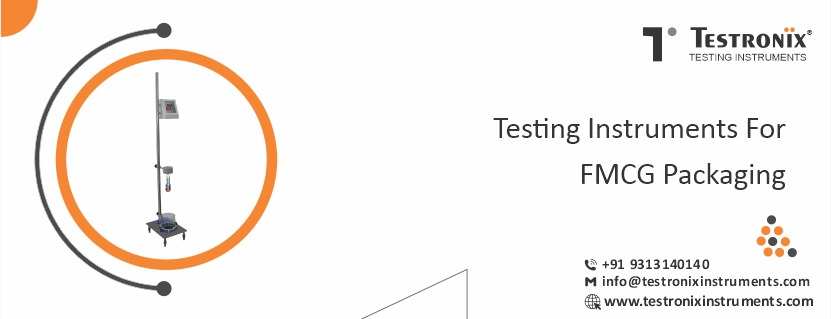Reviewed by Anurag Mishra (Sr. Technical Consultant)

Package testing is an important phase of the product development life cycle (PDLC) for food and beverage (F&B) companies. Proper package testing can help identify potential issues early in the process and prevent downstream quality issues from occurring. In this article, we will discuss some common package testing instruments and their benefits.
Testing is an essential part of quality assurance in the food and beverage industry. It is important to have accurate and timely information about products being produced in order to ensure that they meet quality and safety requirements.
In order to test the efficacy of various packaging materials and processes, it is necessary to use appropriate testing instruments. There are a number of different types of testing instruments available, each with its own set of capabilities and limitations. This article will discuss the different types of testing instruments available, their uses, and which ones are best suited for particular applications.
There are a number of different types of testing instruments available, each with its own set of capabilities and limitations. This article will discuss the different types of testing instruments available, their uses, and which ones are best suited for particular applications.
The most common type of testing instrument is the visual inspection tool. This type of instrument is used to inspect products for visible defects such as misshapen or broken pieces. Visual inspection tools can be used to test a variety of products, including foods, beverages, pharmaceuticals, and packaging materials.
Evaluation of food packaging & FMCG product packets should be conducted for the following properties and parameters:
Testing of food packaging is an essential process in ensuring that the products reach the intended consumers in a safe and quality condition. In order to ascertain whether the package has met the required quality standards, various testing instruments can be used. Here is a look at some of the most commonly used testing instruments for food packaging:
Moisture tester: This instrument measures the moisture content of a product. The purpose is to ensure that products do not become dehydrated or spoil due to moisture loss.
Heat test: This instrument checks for excessive heat levels in food packaging. If the temperature rises above a certain limit, it could indicate that there is an issue with the packaging material.
Peel / Seal / Bond and Adhesion Strength Tester is used to test the adhesion strength of packaging seals as well as peel-off labels. Based on the evaluation of the seal adhesion between two surfaces stuck together, it is highly recommended for use.
Dart Impact Tester is used for the analysis of the sudden impact of a free-falling dart. The free-falling dart is allowed to fall on the packaging film/laminate/shrink packaging. This simple test can help the manufacturer predict the level of damage on the product, when it is subjected to such situations, during storage and transport.
Laboratory Heat Sealer is widely used to evaluate and check the seal quality of packaging, under heating conditions. It is commonly seen that as the heat levels increase, many seal adhesives don't work. This valuable equipment helps manufacturers to test the performance of distinct adhesion products and compare results.
Coefficient of Friction Tester is used by manufacturers to test the coefficient of friction value of plastic and evaluate the impact of friction. Based on the results they can observe and analyze how a product, behaves under the impact of frictional forces.
Conclusion
Testing instruments can be a valuable tool in the arsenal of anyone in the food and beverage industry. Not only do they help identify potential problems with product quality, but they can also provide vital information about consumer preferences and behavior. In this article, we’ve taken a close look at some of the most commonly used testing instruments for FMCG packaging, outlining what each one is used for and how it can benefit your business.